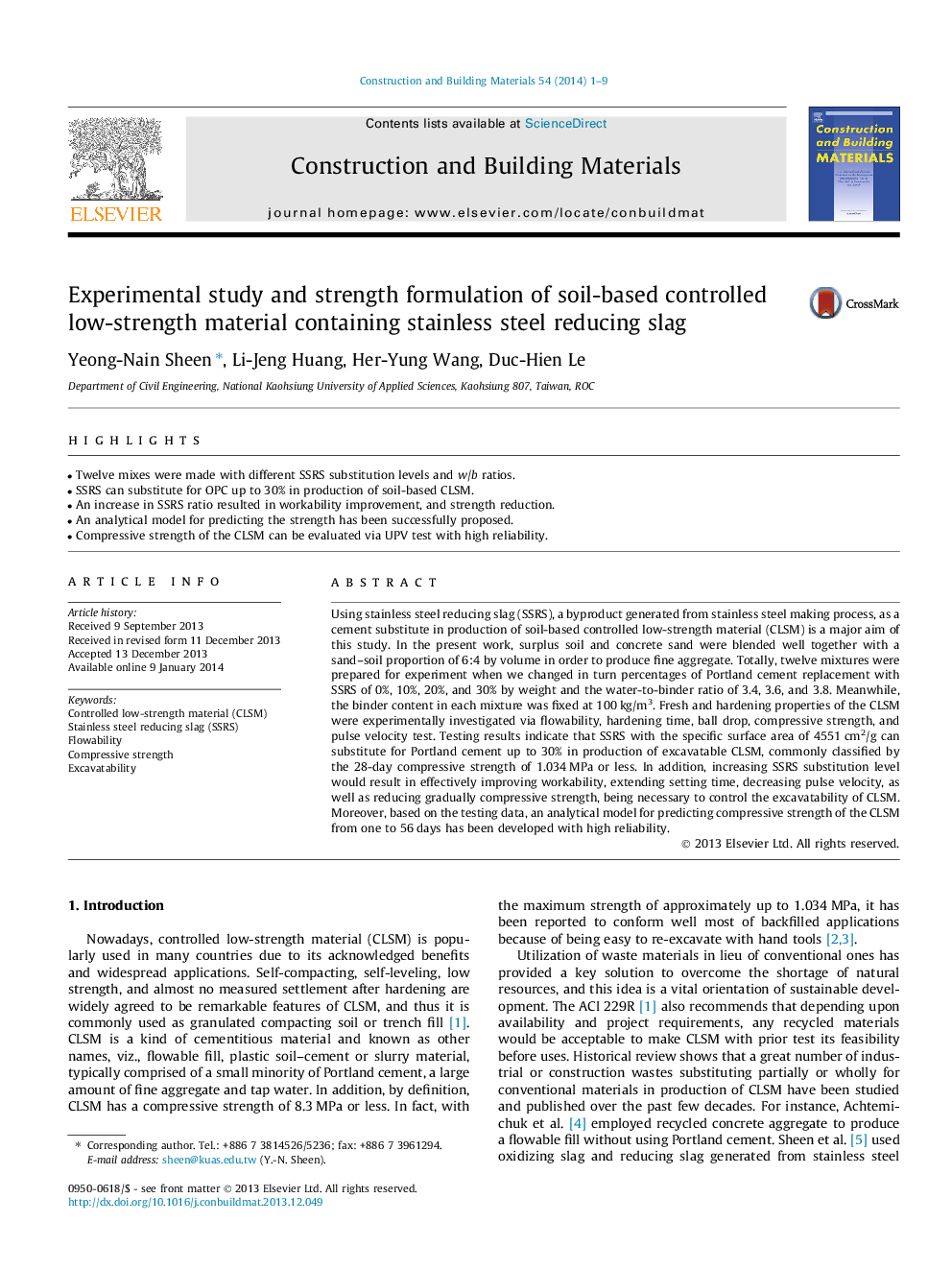| Article ID | Journal | Published Year | Pages | File Type |
|---|---|---|---|---|
| 6723471 | Construction and Building Materials | 2014 | 9 Pages |
Abstract
Using stainless steel reducing slag (SSRS), a byproduct generated from stainless steel making process, as a cement substitute in production of soil-based controlled low-strength material (CLSM) is a major aim of this study. In the present work, surplus soil and concrete sand were blended well together with a sand-soil proportion of 6:4 by volume in order to produce fine aggregate. Totally, twelve mixtures were prepared for experiment when we changed in turn percentages of Portland cement replacement with SSRS of 0%, 10%, 20%, and 30% by weight and the water-to-binder ratio of 3.4, 3.6, and 3.8. Meanwhile, the binder content in each mixture was fixed at 100Â kg/m3. Fresh and hardening properties of the CLSM were experimentally investigated via flowability, hardening time, ball drop, compressive strength, and pulse velocity test. Testing results indicate that SSRS with the specific surface area of 4551Â cm2/g can substitute for Portland cement up to 30% in production of excavatable CLSM, commonly classified by the 28-day compressive strength of 1.034Â MPa or less. In addition, increasing SSRS substitution level would result in effectively improving workability, extending setting time, decreasing pulse velocity, as well as reducing gradually compressive strength, being necessary to control the excavatability of CLSM. Moreover, based on the testing data, an analytical model for predicting compressive strength of the CLSM from one to 56Â days has been developed with high reliability.
Related Topics
Physical Sciences and Engineering
Engineering
Civil and Structural Engineering
Authors
Yeong-Nain Sheen, Li-Jeng Huang, Her-Yung Wang, Duc-Hien Le,
